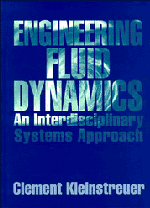Book contents
- Frontmatter
- Contents
- Preface
- List of Symbols and Abbreviations
- Chapter 1 Preliminary Concepts
- Chapter 2 Derivations and Transformations of the Conservation Equations
- Chapter 3 Analyses of Basic Fluid Flow Problems
- Chapter 4 Nonisothermal Flows
- Chapter 5 Selected Case Studies
- Appendix A Differential Operators and Cartesian Tensor Applications
- Appendix B Basic Equations in Rectangular, Cylindrical and Spherical Coordinates
- Appendix C Simplified Governing Equations
- Appendix D Stream Function Formulation in Planar and Axisymmetric Coordinates
- Appendix E Physical Properties of Gases and Liquids
- Appendix F Numerical Tools and Program Listings
- Index
Chapter 2 - Derivations and Transformations of the Conservation Equations
Published online by Cambridge University Press: 05 June 2012
- Frontmatter
- Contents
- Preface
- List of Symbols and Abbreviations
- Chapter 1 Preliminary Concepts
- Chapter 2 Derivations and Transformations of the Conservation Equations
- Chapter 3 Analyses of Basic Fluid Flow Problems
- Chapter 4 Nonisothermal Flows
- Chapter 5 Selected Case Studies
- Appendix A Differential Operators and Cartesian Tensor Applications
- Appendix B Basic Equations in Rectangular, Cylindrical and Spherical Coordinates
- Appendix C Simplified Governing Equations
- Appendix D Stream Function Formulation in Planar and Axisymmetric Coordinates
- Appendix E Physical Properties of Gases and Liquids
- Appendix F Numerical Tools and Program Listings
- Index
Summary
In order to obtain the basic transport equations, a suitable computational domain is selected and the conservation laws for mass, momentum, and energy are applied. The form of the resulting equations, including constitutive equations to gain closure, depends largely on the type of approach taken in terms of “suitable model selection.” As discussed in Section 1.2.1 for the closed system approach, we consider a deformable volume moving with the fluid such that the individual fluid particles are always accounted for (Lagrange). In contrast, from the Eulerian point of view (open system), we consider a fixed control volume with the fluid moving through it. When these fixed or moving volumes are of finite extent, rate equations or integral equations can be directly obtained for the global flow quantities such as flow rates and forces (cf. Reynolds Transport Theorem). When such a system volume or control volume shrinks to an infinitesimally small fluid element of the flow field, differential equations can be directly obtained for the local flow quantities such as velocities and pressure. Alternatively, one could take a molecular approach (as done at supercomputing research centers) where the fundamental laws of nature are directly applied to the individual moving, and colliding molecules of a particular fluid in motion.
In summary, engineers prefer the Eulerian framework, that is, mass, momentum, and energy balances for an open system.
- Type
- Chapter
- Information
- Engineering Fluid DynamicsAn Interdisciplinary Systems Approach, pp. 39 - 112Publisher: Cambridge University PressPrint publication year: 1997



